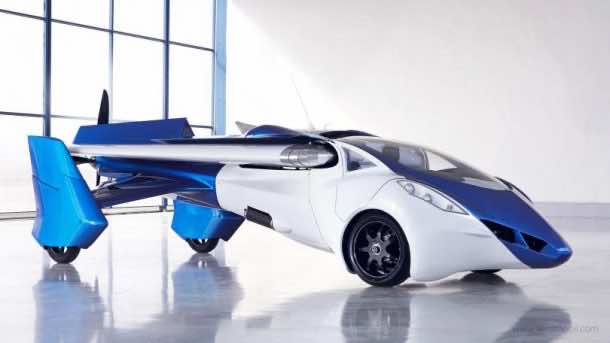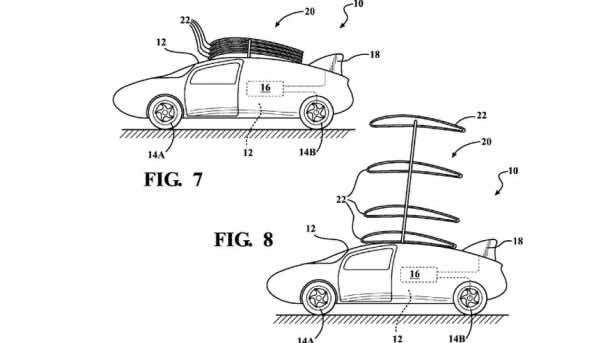In the 70’s and 80’s, mobile phones were a magical concept that we saw only in the movies. After a few decades, now we have smartphones, laptops, tablets, and so many other things that seemed fictional to the last generation. Those same movies also had flying cars, and this concept is in vogue since the 20th century, especially in the sci-fi genre. Still, producing the lovechild of an automobile and an aircraft has not been successful yet, despite the constant efforts of companies like Terrafugia.

Toyota, the world’s top automaker, filed the patent for “Aerocar,” and it has rekindled the hope of flying cars while thrusting the subject into the limelight. Well, not exactly a flying car, but a unique technology for the flying cars that includes stackable wing system to make flying possible. Toyota has clarified that it is not working on a holistic flying car but rather something resembling a hovercraft.
This design solves a major challenge in the concept of flying cars. Instead of wings emerging from the sides of the vehicle that take up a lot of space on roads, Toyota has proposed to use a stack of multiple wings on top of the car to give it the required aerodynamic lift.
The car looks sleek even without its intended fuselage. It is shaped almost like a tear-drop with a cute propeller at its rear end. On top of the design is a novel way of hiding the wings underneath the body panels. However, cars by Terrafugia fold the wings onto the body to drive on the roads.

John Preston and Ben Waterson of the University of Southampton’s Transportation Research Group published an article in Guardian in 2015 that said,
“Such a system would only succeed if infrastructure – air traffic control, landing space and so on – was set aside. While flying cars could technically operate from airport to airport, what’s the point? Until there are sufficient numbers to set aside pieces of land or roads for takeoff we won’t achieve any of the benefits.”
Another issue is the affordability. Even the current prototypes of flying car produced by a small number of startups look more like aircraft for wealthy hobbyists who can afford $300,000 worth of toys. Hence, we are quite far from the mass-production of Toyota Camrys and Rav4s landing in front of our garages.
The fact that Toyota has filed that patent does give some legitimacy to the idea. However, companies file a patent even for the smallest of their designs. But if this goes further, flying cars, being the holy grail of automobile advancement, would be the next big thing. There is no doubt in that the sky is the limit, even for the automakers!


